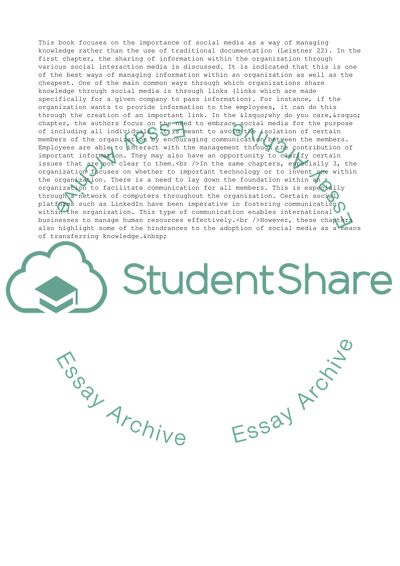Cite this document
(Special Tools for Knowledge Management Assignment Example | Topics and Well Written Essays - 1500 words, n.d.)
Special Tools for Knowledge Management Assignment Example | Topics and Well Written Essays - 1500 words. https://studentshare.org/management/1794741-knowledge-management
Special Tools for Knowledge Management Assignment Example | Topics and Well Written Essays - 1500 words. https://studentshare.org/management/1794741-knowledge-management
(Special Tools for Knowledge Management Assignment Example | Topics and Well Written Essays - 1500 Words)
Special Tools for Knowledge Management Assignment Example | Topics and Well Written Essays - 1500 Words. https://studentshare.org/management/1794741-knowledge-management.
Special Tools for Knowledge Management Assignment Example | Topics and Well Written Essays - 1500 Words. https://studentshare.org/management/1794741-knowledge-management.
“Special Tools for Knowledge Management Assignment Example | Topics and Well Written Essays - 1500 Words”. https://studentshare.org/management/1794741-knowledge-management.


